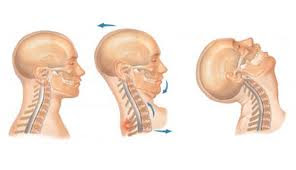Whiplash
Definition:
Whiplash is a neck injury that can occur during rear-end automobile collisions, when your head suddenly moves backward and then forward — similar to the motion of someone cracking a whip. These extreme motions push your neck muscles and ligaments beyond their normal range of motion.
Whiplash injuries can be mild or severe. Treatment typically begins with over-the-counter pain relievers and ice applied to the painful neck muscles. If pain persists, prescription medications and physical therapy may be helpful.
Most people recover from whiplash in just a few weeks, but some people may develop chronic pain after a whiplash injury.
Symptoms:
Most whiplash symptoms develop within 24 hours of the injury and may include:
Contact your doctor promptly if:
Whiplash typically occurs when a person's head is thrown backward and then forward, straining the neck's muscles and ligaments. This type of injury may result from:
Most people who experience whiplash will recover in the first two to three months. Fewer people may continue to have pain for several months — possibly up to two years — after the injury occurred. In some people, this chronic pain can be traced to damage in the joints, disks and ligaments of the neck. But in many cases, no abnormality can be found to explain this persistent neck pain.
Treatments and drugs:
Medications
If over-the-counter pain medications and self-care treatments at home aren't enough, your doctor may suggest:
Physical therapy interventions are the mainstay of treatment for whiplash. Therapy treatments may include:
Foam collars
Although soft foam cervical collars were once commonly used for whiplash injuries, they no longer are recommended routinely. Immobilizing the neck for long periods of time can lead to decreased muscle bulk and strength and impair recovery.
If worn temporarily, cervical collars should be worn for no longer than three hours at a time and for only the first few days after the injury. If you're continually being awakened at night by whiplash pain, especially early on after the injury, wearing a cervical collar may help you sleep.
Definition:
Whiplash is a neck injury that can occur during rear-end automobile collisions, when your head suddenly moves backward and then forward — similar to the motion of someone cracking a whip. These extreme motions push your neck muscles and ligaments beyond their normal range of motion.
Whiplash injuries can be mild or severe. Treatment typically begins with over-the-counter pain relievers and ice applied to the painful neck muscles. If pain persists, prescription medications and physical therapy may be helpful.
Most people recover from whiplash in just a few weeks, but some people may develop chronic pain after a whiplash injury.
Symptoms:
Most whiplash symptoms develop within 24 hours of the injury and may include:
- Neck pain and stiffness
- Headaches, most commonly at the base of the skull
- Dizziness
- Blurred vision
- Fatigue
- Difficulty concentrating
- Memory problems
- Ringing in the ears
- Sleep disturbances
- Irritability
Contact your doctor promptly if:
- The pain spreads to your shoulders or arms
- It becomes painful to move your head
- You experience numbness, tingling or weakness in your arms
Whiplash typically occurs when a person's head is thrown backward and then forward, straining the neck's muscles and ligaments. This type of injury may result from:
- Auto accidents. Rear-end collisions are the most common cause of whiplash.
- Physical abuse. Whiplash may also result from incidents of being punched or shaken. Whiplash is one of the injuries sustained in shaken baby syndrome.
- Contact sports. Football tackles and other sports-related collisions can sometimes cause whiplash injuries.
Most people who experience whiplash will recover in the first two to three months. Fewer people may continue to have pain for several months — possibly up to two years — after the injury occurred. In some people, this chronic pain can be traced to damage in the joints, disks and ligaments of the neck. But in many cases, no abnormality can be found to explain this persistent neck pain.
Treatments and drugs:
Medications
If over-the-counter pain medications and self-care treatments at home aren't enough, your doctor may suggest:
- Prescription painkillers. People with more severe pain may benefit from short-term treatment with prescription pain relievers.
- Injections. An injection of lidocaine (Xylocaine) — a numbing medicine — into painful muscle areas may relieve the muscle spasms that can be associated with whiplash injuries.
- Muscle relaxants. These drugs can help ease muscle spasms but often cause drowsiness, so your doctor may want you to take them only at bedtime.
Physical therapy interventions are the mainstay of treatment for whiplash. Therapy treatments may include:
- Ice
- Heat
- Manual therapies, including myofascial release
- Ultrasound
Foam collars
Although soft foam cervical collars were once commonly used for whiplash injuries, they no longer are recommended routinely. Immobilizing the neck for long periods of time can lead to decreased muscle bulk and strength and impair recovery.
If worn temporarily, cervical collars should be worn for no longer than three hours at a time and for only the first few days after the injury. If you're continually being awakened at night by whiplash pain, especially early on after the injury, wearing a cervical collar may help you sleep.











0 komentar:
Posting Komentar